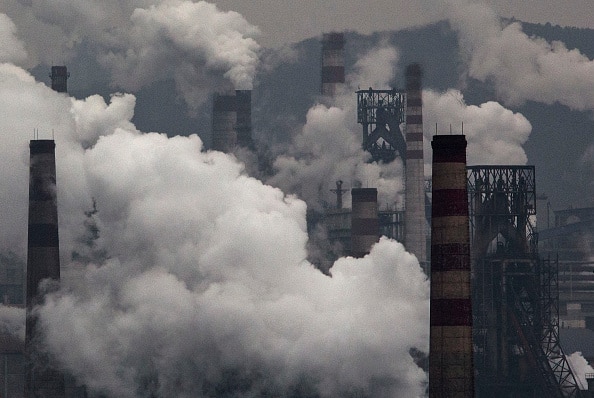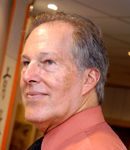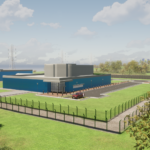Weaning a house and the world from fossil fuels: lessons learned
By Richard C. J. Somerville | August 4, 2022

As a climate scientist, I recently carried out two interesting research projects. Both are relevant to efforts to reduce the danger of human-caused climate change. First, I decided to investigate how a family in the United States might quickly modify its house to reduce its emissions of carbon dioxide and its consumption of fossil fuels to near zero, while at the same time saving money. I picked my own family and our house as the guinea pigs for this experiment. Second, I worked to increase my understanding of whether the world as a whole could rapidly reduce global emissions of heat-trapping substances. I discovered an assessment that I found persuasive in the 2022 book by Vaclav Smil, How the World Really Works: A Scientist’s Guide to Our Past, Present and Future.
It took only a few months to modify my house to operate almost entirely on electricity and to generate nearly all that electricity from solar energy rather than fossil fuels. The solar photovoltaic system we installed is on track to pay for itself in only a few years. Weaning the entire world from fossil fuels, however, is a staggeringly complex and difficult task. Imagining a better world for tomorrow is relatively easy. Getting to that better world, starting from the existing world of today, is not easy at all. Vaclav Smil makes the case that this task will require immense changes in many areas where fossil fuels are now vital to the production of massive amounts of materials indispensable to modern civilization. He estimates that completing that transition will likely take several decades or even longer.
My family occupies a single-family home in southern California. The house was built in 1978. We have owned it since 1979. It is a one-story, three-bedroom house with a total area of about 2,700 square feet or 250 square meters. It is a frame house on a concrete slab with a white stucco exterior and a tile roof. It has an attic, used mainly for ducting, but no basement. The climate of this area is formally classified as Mediterranean, with hot, sunny, dry summers and mild winters. Winter is cooler and wetter than summer, but total precipitation is lower than in many typical Mediterranean climates. Annual precipitation in our area is usually less than about 12 inches or 30 centimeters.
Like many houses in North America, our house had been heated in winter by a forced air system, using a furnace fueled by natural gas. The house was not originally air conditioned, but it is only a few kilometers from the Pacific Ocean. Breezes from the ocean and a lagoon provide a significant amount of natural cooling. However, in recent years, summers in the region have become somewhat warmer and we decided to air condition our house.
To cut our energy consumption, we chose to remove the furnace and install a modern reversible electric heat pump system. This system heats the house in winter and cools it in summer, with three zones, independently controlled. The system components included new ducting, air handlers and purifiers, and electronic thermostats. Heat pump systems have many advantages over traditional home heating systems based on combustion of fossil fuels. They are more efficient, they both heat and cool, they improve air quality, they are long-lasting, they require little maintenance, they are quiet, and they provide health benefits as well as comfort. On the other hand, they are complex, they often have high up-front costs, and they are not ideal in all areas. Our heat pump system cost about $39,000. It was installed in August 2021.
Our house is located near San Diego, California, at a latitude of about 33 degrees North. There is abundant sunshine throughout the year, and the house has a large unobstructed south-facing roof. Thus, it was a good candidate for a solar photovoltaic system to generate electricity. In 2021, a solar energy contractor designed a system with 26 solar modules or panels on our roof. The system included 26 modern microinverters to convert the direct current produced by the solar modules to the alternating current required by the house. The system also included a necessary upgrade to the main electric service panel of the house, with safety features required by local codes.
The estimated annual energy production of this solar photovoltaic system is about 16 megawatt hours (MWh). This amount is also approximately the estimated annual consumption of electricity by the house. The solar system produces significantly more electric energy in summer than in winter because the sun is higher in the sky in summer, and summer days are longer. The contractor’s software had predicted that the system would produce about 1.0 MWh per month in winter and about 1.6 MWh per month in summer. The system included detailed monitoring capability, and the first few months of data showed that the actual production was very close to these predicted amounts.
During times when the solar photovoltaic system produces more energy than the house is using, it sends the excess energy into the grid, and the electric utility credits us for this electric energy. Under current California regulations, this solar photovoltaic system is estimated to pay for itself in about six years, after which the electricity generated by the solar system will be essentially free. However, such estimates are often unreliable, because experience suggests that both the California regulatory regime and retail electricity prices can change by large amounts in only a few years.
One highly unpredictable quantity is the future price to be credited by the utility to the homeowner for excess energy fed into the grid. Considerable uncertainty also characterizes the future price to be paid by the homeowner to buy electricity from the utility, during times when the solar photovoltaic system is producing either no electricity or less electricity than the house is using. Of course, the utility always has to have some excess generating capacity ready to handle any increase in demand. However, on annual average, our solar photovoltaic system generates about as much electricity from the sun as our house uses.
This solar photovoltaic system was turned on and began producing electricity in January 2022. Its total cost was about $43,000. We recognize that many families could not afford the cost of the heat pump system plus the solar photovoltaic system. However, US law in 2022 provides a federal income tax credit of 26 percent of the solar system cost. This credit will reduce our 2022 income tax by about $11,000, so our net cost for the solar photovoltaic system will be about $32,000. At the time I wrote this piece, the federal income tax credit was set to decrease from 26 percent to 22 percent in 2023 and to expire in 2024, but pending legislation may change this.
~~~
My next goal was to better understand how modifying our house relates to reducing the risk and magnitude of human-caused climate change. A relevant resource is the work of Vaclav Smil, whom I first met in 1995 in Aspen, Colorado. He was a professor at the University of Manitoba in Canada. He had come to Aspen at the invitation of the Aspen Global Change Institute (AGCI) to participate in a workshop relevant to mitigating climate change. I was impressed with Smil’s breadth of knowledge and his ability to speak rapidly without notes. Listening to Smil or reading his books is, metaphorically speaking, “drinking from a fire hydrant.” One is deluged by data. Smil spoke at AGCI workshops in Aspen several times.
Smil was born in 1943 in a mountainous and forested area now in the Czech Republic. At the time of his birth, however, this area was part of the German Protectorate of Bohemia and Moravia. After World War II, the pre-war state of Czechoslovakia was re-established. It quickly became a Marxist-Leninist country dominated by the Soviet Union. In August 1968, a period of liberalization in Czechoslovakia ended violently when the country was invaded militarily by the Soviet Union, assisted by several other Warsaw Pact countries. (The military invasion of Ukraine by Russia in 2022 has several similarities to this 1968 event.)
Smil had studied for five years at the Faculty of Natural Sciences of Charles University in Prague, attending a large number of courses in a wide range of subjects and earning an undergraduate degree and a graduate degree, the latter approximately equivalent to the American degree of Master of Science. Smil, who had refused to join the Communist party, and his wife, Eva, a recently graduated physician, left Czechoslovakia in 1969, shortly before the Soviets closed the country’s borders, emigrating first to the United States. After arriving in the United States, Smil quickly earned a doctorate in geography in 1971 from the Pennsylvania State University.
In 1972, Smil accepted the first job offer he received and joined the faculty of the University of Manitoba, located in Winnipeg, Canada, where he has remained for some 50 years. Reputed to be somewhat reclusive, Smil does not own a cell phone, does not like to give interviews, and does not go to faculty meetings. He reads prodigiously; I have heard him say that he used to read about 100 books per year, but the number has recently dropped to about 75. His memory is extraordinary.
Smil’s productivity over his half-century career at Manitoba has been astonishing. He has published some 500 papers and more than 40 books. His books are mainly intended for the general reader, and they range widely, but energy has been a dominant theme in many of them. In 2022, he published How the World Really Works: A Scientist’s Guide to Our Past, Present and Future, a magisterial and up-to-date overview of Smil’s work on energy, with an emphasis on the climate change issue. Of the more than 300 pages in this book, about 70 are devoted to detailed references and notes, including the sources of Smil’s data.
Vaclav Smil knows that human-caused climate change is an important and serious problem that should come as no surprise to anyone. Citing work in the 1800s by Eunice Foot, John Tyndall, and Svante Arrhenius, Smil scolds the world for ignoring what these pioneering scientists had discovered: “Clearly, we did not have to wait for new computer models or for the establishment of an international bureaucracy to be aware of this change and to think about our responses.”
I think Smil may be a little too harsh in this reproach. One should recognize the long time it took for the work of these early pioneers to be accepted by the scientific community. In 1958, when I entered Penn State as a freshman meteorology major, climate change science was truly in its infancy. At that time, only a few scientists clearly understood that man-made increases in the amount of atmospheric carbon dioxide might cause large climate changes. In 1958, there were no global climate models, no supercomputers, no long-term record of monitoring atmospheric carbon dioxide amounts, and no satellite remote sensing data.
The definitive one-volume summary of atmospheric science when I began my university education was the Compendium of Meteorology, a multi-authored book of more than 1,000 pages, published in 1951 by the American Meteorological Society. The Compendium article on climate change, written by the distinguished British climatologist C. E. P. Brooks, reflects the prevailing expert opinion of that time. That article began by stating that variations in atmospheric carbon dioxide amounts had been considered by some scientists as a cause of climate change, “but the theory was never widely accepted and was abandoned when it was found that all the long-wave radiation absorbed by CO2 is also absorbed by water vapour.” In recent years, spectroscopy (the study of the absorption and emission of radiation by matter) has greatly advanced, and today we know this assertion by Brooks is simply wrong. Brooks went on to state that a recent increase in the atmospheric carbon dioxide amount due to burning coal had been cited “as an explanation of the recent rise in world temperature. But during the past 7,000 years there have been greater fluctuations of temperature without the intervention of man, and there seems to be no reason to regard the recent rise as more than a coincidence. This theory is not considered further.” There is a valuable lesson about humility here.
In the 60 years or so since 1961, when I graduated from Penn State with a bachelor’s degree in meteorology, the field of climatology and our understanding of climate change have truly been revolutionized. In many ways, our present understanding of human-caused climate change has its roots in the discoveries of three great scientists. Tyndall discovered that both carbon dioxide and water vapor absorb infrared energy. Arrhenius demonstrated that doubling carbon dioxide levels would cause significant warming. Charles David Keeling accurately measured the amount of carbon dioxide in the atmosphere and showed that it is increasing due to human activities. Arrhenius was a brilliant theorist, Tyndall was a superb experimenter, and Keeling was an extremely skillful and dedicated observer. It is noteworthy that both Tyndall and Keeling designed and built their own instruments.
Sixty years ago, as the Compendium article by Brooks demonstrates, very few scientists thought that changes in atmospheric carbon dioxide amounts could affect climate. Today, we understand that Brooks was wrong. Climate is indeed sensitive to carbon dioxide. To limit climate change, there is an urgent need to greatly reduce emissions of carbon dioxide and other heat-trapping substances. If the world wants to avoid making climate damage more severe, the amount of carbon dioxide in the atmosphere must stop increasing. That means global emissions of heat-trapping substances like carbon dioxide must go to zero and stay there, because some of the carbon dioxide emitted into the atmosphere remains there for millennia.
Smil shares this sense of urgency. However, he has a low opinion of climate models and of long-range predictions and models in general. I think Smil may not fully understand that models are useful for more than making forecasts. They also play a central role in producing nearly all the climate observations that scientists use. For example, models derive atmospheric temperatures from the radiances that satellites measure. They also aid in exploring aspects of climate change other than warming.
In several important ways, I think Vaclav Smil resembles the economist, Thomas Piketty. They both use a wide variety of data to help us understand the world. Piketty draws on 19th-century novels, for example, because the writers Honoré de Balzac in France and Jane Austen in England understood that if you knew how much land a farmer owned, you could estimate his income accurately. Piketty’s book Capital in the 21st Century is his masterpiece.
Both Smil and Piketty are big-picture analysts. They want to know how the important aspects of their respective worlds really function, and they are realists. Others can analyze Smil’s thinking because he provides the sources of the data he works from. I suspect Smil is quite right overall, and many climate activists who talk about weaning the world quickly from fossil fuels rarely understand the details of how crops become food and how steel and cement are used in cities and highways, or how widespread plastics have become and how central fossil fuels are to these processes. Smil’s value as a thinker about climate change is that he strives to be a reality check. He wants us to learn how to recognize nonsense and filter it out.
Mundane but very important aspects of human endeavor, such as agriculture, producing steel, and making concrete, are central to Smil’s argument. Smil calls ammonia, steel, concrete and plastics, “the four pillars of modern civilization.” Countries not yet fully developed now crave these pillars, too. All four pillars require very large amounts of fossil fuels to produce. Thus, Smil seems pessimistic about prospects for the world weaning itself rapidly from fossil fuels. However, he would surely describe his view as realistic rather than pessimistic.[1] Smil writes: “Modern economies will always be tied to massive material flows, whether those of ammonia-based fertilizers to feed the still-growing global population; plastics, steel, and cement needed for new tools, machines, structures, and infrastructures; or new inputs required to produce solar cells, wind turbines, electric cars, and storage batteries. And until all energies used to extract and process these materials come from renewable conversions, modern civilization will remain fundamentally dependent on the fossil fuels used in the production of these indispensable materials.”
~~~
Although I do not agree with everything Smil has to say, I do enthusiastically admire his work and highly recommend this book to everyone interested in climate change. Smil repeatedly emphasizes his conviction that weaning the world from fossil fuels will take much longer and will be much more difficult than most people realize. He advocates many common-sense steps, such as reducing food waste and driving smaller cars. The title of his book, How the World Really Works, conveys his conviction that we are being extremely naive if we continue to insist, as many of us are prone to do, that we already have all the necessary technology, so we are now fully able to limit climate change to moderate or tolerable amounts, but we lack only the political will to do it.
Modifying my family’s house so that it runs entirely on electrical energy, and then providing that energy “for free” by putting solar modules on the roof, has been educational for me. It has helped me to appreciate Smil’s central point. He makes the case for how extremely difficult it will be, and how very long it is likely to take, to wean the entire world, not just one house, from fossil fuels.
Notes
[1] Bill Gates published his book How to Avoid a Climate Disaster in 2021. In it, he writes, “I had become convinced of three things:
- To avoid a climate disaster, we have to get to zero greenhouse gas emissions.
- We need to deploy the tools we already have, like solar and wind, faster and smarter.
- And we need to create and roll out breakthrough technologies that can take us the rest of the way.”
Gates’s prescriptions thus include doing everything we already know how to do, but doing it better, and they additionally include developing many “breakthrough technologies” that do not yet exist. Indeed, Gates is spending some of his own vast wealth in efforts to speed up the process. Gates also states, “I think more like an engineer than a political scientist.” Gates is not an engineer, but he does have great faith in technology, science, and reason. He also is known to admire Vaclav Smil. However, Gates gives no details of who will pay the bills for the efforts he advocates, or how to persuade the many reluctant governments and corporations to act.
Mark Z. Jacobson of Stanford University and his co-authors have a long history of describing and advocating solutions to the climate change challenge based on using only the three main renewable energy resources: wind, water and solar. There is a section on “political uncertainty” in their 2022 paper, “Low-cost solutions to global warming, air pollution, and energy insecurity for 145 countries.” This paper is cited as DOI: 10.1039/d2ee00722c and is also available at
http://web.stanford.edu/group/efmh/jacobson/Articles/I/145Country/22-145Countries.pdf . The section on political uncertainty does state that, “the scale of the transition is enormous” and the pace required depends, “on whether manufacturing and deployment can be ramped up fast enough.” However, no details are given as to how to bring about the required changes. I think Vaclav Smil might well respond by noting that, like many other authors, Jacobson and his co-authors describe a desirable destination but cannot provide a detailed and realistic map for reaching it.
Vaclav Smil himself has published an extensive criticism of an earlier book by several authors, including the physicist and prolific writer Amory Lovins, who has long been associated with the Rocky Mountain Institute. This criticism appeared in Smil’s paper, “Rocky Mountain Visions: A Review Essay.” This paper was first published 27 January 2004 and is available at https://onlinelibrary.wiley.com/doi/abs/10.1111/j.1728-4457.2000.00163.x.
Smil’s paper is a review of the 1999 book by Paul Hawken, Amory Lovins, and L. Hunter Lovins, Natural Capitalism: The Next Industrial Revolution.
In this paper, Smil attempts not only to critique this book but also to address the general category of optimistic prescriptions for a better future, prescriptions that he considers naive or unrealistic, because they do not acknowledge or consider the obstacles and difficulties that Smil would later summarize in his 2022 book, How the World Really Works. In this 2004 review essay, he says, “I share their calls for technical rationality, higher efficiency, lower environmental impacts, and more considerate farming – but I cannot foresee such easy walks and such stunning rewards in so short a time as they claim or imply. My quarrel is not with their goals but with the excessive promises, repeated exaggerations, wishful thinking, and righteous insistence that theirs is the only enlightened way.”
Together, we make the world safer.
The Bulletin elevates expert voices above the noise. But as an independent nonprofit organization, our operations depend on the support of readers like you. Help us continue to deliver quality journalism that holds leaders accountable. Your support of our work at any level is important. In return, we promise our coverage will be understandable, influential, vigilant, solution-oriented, and fair-minded. Together we can make a difference.
Keywords: "How the World Really Works", Thomas Piketty, Vaclav Smil, ammonia, climate change, concrete, plastics, steel
Topics: Climate Change















